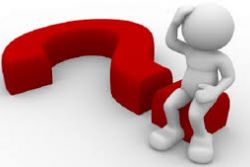- Business
- Childbirth & Education
- Legal Formalities
- Motoring
- Other
- Pensions & Benefits
- Property & Accommodation
- Taxes
- Airports and Airlines Spain
- Paramount Theme Park Murcia Spain
- Corvera International Airport Murcia Spain
- Join us for Tea on the Terrace
- When Expat Eyes Are Smiling
- Meet Wincham at The Homes, Gardens & Lifestyle Show, Calpe
- QROPS 2014
- Spain Increases IHT in Valencia & Murcia
- Removals to Spain v Exports from Spain
- The Charm of Seville
- Gibraltar Relations
- Retiro Park : Madrid
- Community Insurance in Spain
- Calendar Girls
- Considerations when Insuring your Boat in Spain
- QROPS – HMRC Introduces changes that create havoc in the market place
- QROPS – All Change From April 2012
- Liva & Laia : 15th November

Spain's economy expanded in the first quarter at its fastest pace in over seven years, setting it firmly on course to meet a new 2015 growth target of 2.9%, although fresh data also showed large economic imbalances had yet to be corrected.
The improving state of the Spanish economy is the cornerstone of Prime Minister Mariano Rajoy's bid to win a 2nd term in a general election due later this year as he fights the onset of new political forces.
Output grew 0.9% in the first 3 months of the year, more than expected and its fastest expansion rate since 2007, spurred on by a pick-up in household spending after a steep downturn, the National Statistics Institute said.
Rajoy said on Monday that the Spanish economy would expand by 2.9% in 2015, up from a previous 2.0% projection. His centre-right government is expected to confirm the new forecasts later on Thursday.
The economy grew 1.4% in 2014.
"The recovery is now moving onto a higher plane, elevated by a supportive external environment, namely lower crude oil prices and the recent slide in the euro, which will help to quicken the recovery momentum throughout 2015," said IHS Global Insight economist Raj Badiani in a note.
Falling inflation rates have also helped prop up the recovery by boosting family budgets, economists argue. Spanish consumer prices dropped 0.7% in April.
Although Spain has now left behind two recessions and a banking crisis to grow at one of the euro zone's fastest rates, a sky-high jobless rate still blights the turnaround.
Related Coverage
A still large public deficit and an external debt worth around 170% of GDP - one of the highest in the world - are other potential threats for the recovery down the road.
The external debt of a country measures what the government, banks, companies and families owe to the rest of the world and is a good measure of whether a country lives beyond its means.
Spain's current account was in deficit to the tune of EU2.03 Bln in February, the Bank of Spain said on Thursday.
Also clouding the horizon is the perspective of a fragmented parliament emerging from the general election that could stall the rhythm of reforms in the country, increase borrowing costs and weigh negatively on consumer and business confidence.
A recent poll showed four parties -- the ruling PP, the opposition PSOE and upstarts Ciudadanos and Podemos -- would all come in at between 18 and 22%.
"With the economy turning the corner, the next challenge is to ensure that the recovery is more inclusive, particularly with a 'once in a lifetime' general election to be held in the latter half of 2015," Badiani said.
Recommended Reading :
* PM revises up Spanish GDP growth in 2015 to 2.9%
* Spanish GDP will not return to pre-crisis levels until 2017 : IMF










